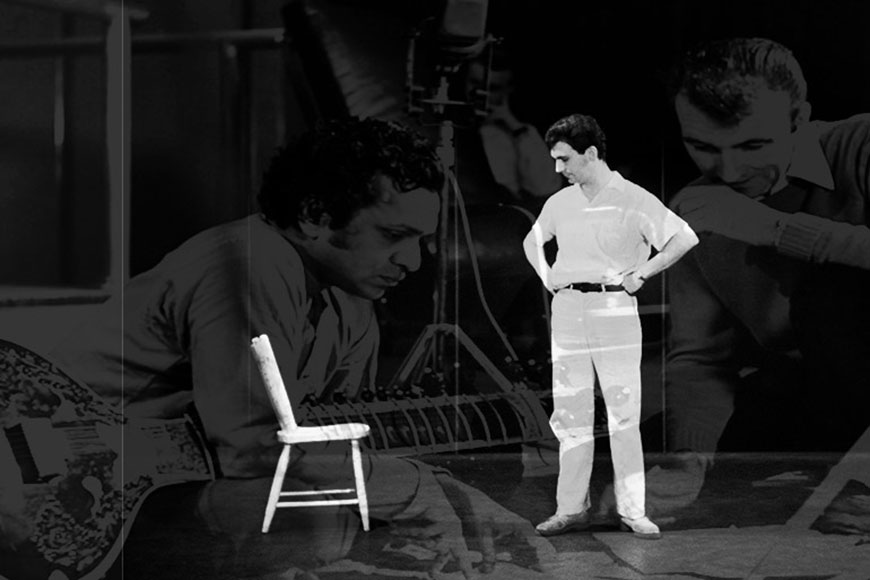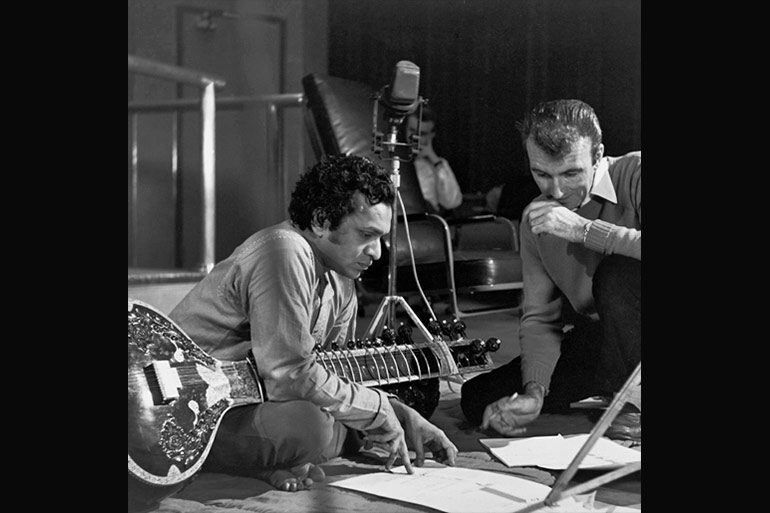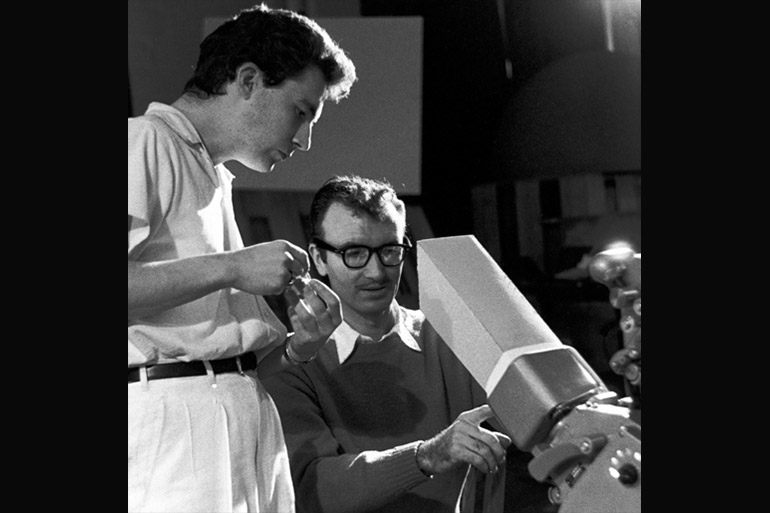‘A Chairy Tale': Ravi Shankar, Chaturlal, Norman McLaren, and Claude Jutra's Unforgettable Cinematic Feat – GetBengal story

The year was 1957. Norman McLaren and Claude Jutra collaborated on a short film, A Chairy Tale, for the National Film Board of Canada (NFB). McLaren directed the film starring Jutra, which portrays a dissonant relationship between a man and a chair. The quirky 9-minute, 55-second film, animated by Evelyn Lambart, features a chair that refuses to be sat upon, forcing a young man, played by Jutra, to perform a sort of dance with the chair. Pandit Ravi Shankar and Chaturlal set the musical score for the film, and through this work, the duo introduced and familiarised the global audience with the magic of Indian classical music.
The music, composed by Pandit Ravi Shankar and Chaturlal, effectively conveys the emotions of an inanimate object. The music fluidly accompanies the sudden and abrupt movements of the chair. The tabla and the sitar are constantly communicating with each other, like the chair and the young man. Music is the focal point of the overall presentation, which has a sensory impact on the audience. There is silence in between to enhance the intensity of certain emotions and actions.
 Ravi Shankar and Norman McLaren
Ravi Shankar and Norman McLaren
‘A Chairy Tale’ was critically acclaimed and received several prestigious awards, like the Venice Film Festival Award in the Non-Theatrical Arts and Experimental category in 1957, second prize at the Rapallo International Film Festival in the Experimental category (1957), Special Award: Work Lying Outside The Feature and Documentary Fields at the British Academy of Film and Television Arts (BAFTA, 1958), Award of Merit, Non-theatrical, Arts and Experimental (1958) at the 10th Canadian Film Awards, and was nominated in the 30th Academy Awards for Best Live Action Short Subject (1958). The film may have disappeared from public memory, but its unique music certainly made the audience sit up, notice, and lap it up in the West.
Norman McLaren was born in Scotland. At the age of 18, he joined the Glasgow Film Society and became interested in the aesthetic side of filmmaking. At the Glasgow Amateur Film Festival in 1935, his third film, Seven Till Five, won an award. His unusual work caught the eye of famed British documentary filmmaker and film critic John Grierson, who was head of the UK General Post Office (GPO) film unit at the time, and offered him a position at the G.P.O. film unit in London. This was followed by his direct experience during the Spanish Civil War in 1936. Shortly thereafter, he embarked on a journey to the United States in 1939, on the eve of World War II. By then, Europe was already embroiled in the war. During this time, Grierson established the National Film Board, and in 1941, he invited McLaren to join the board. From here, McLaren's historic journey into the film world began. While he was working on his own projects, McLaren was also involved with UNESCO in the 1950s and 1960s. He visited China in 1949 and came to India in 1953 for UNESCO to teach locals a range of animation techniques.
McLaren won an Oscar in 1953 for 'Neighbours'. The film revolves around a pointless feud where two neighbours clash over the ownership of a blooming flower, resulting in their inevitable deaths. This poignant account of war leaves us bereft, alarmed, and aware. In 1956, he travelled to Montreal, Canada, and built a new studio there. This was to be his home until 1987, when he breathed his last on January 27.
Best known as a director of animated films, McLaren was a pioneer and an innovator throughout his long and distinguished career. Among his many accomplishments, he developed new ways of thinking about animation, including hand-drawn animation, drawn-on-film animation, pixilation, and graphical sound. In 1970, the BBC presented a documentary about McLaren with a very significant title: The Eye Hears, the Ear Sees.
McLaren had completed shooting ‘A Chairy Tale’ but the film did not have music until then. Pandit Ravi Shankar and Chaturlal were invited to Montreal for a television recital. McLaren met them and invited them to view the film. They were intrigued and decided to compose the music for the film. Since the film was already edited, McLaren split the film into about 10 loops and recorded the music into each of these loops. He added 10 seconds of silence to each loop to synchronise the music and the performance. Evelyn Lambert then animated the chair in stop-motion for the film.
The story of ‘A Chairy Tale’ begins with a man entering the stage with a book in his hands and attempting to sit on the chair, but the chair is unyielding, and he takes offence at the man who is trying to sit on it.
The man keeps chasing the chair, but the object effectively evades him every time. Frustrated, the man starts to ignore the chair, which makes it lonely. This makes the chair come back to the man, wanting him to accept it but still not letting him sit on it. The battle continues until the man lets the chair sit upon him instead!
The director’s genius in characterising the chair with a wide range of emotions was highly appreciable. The man’s dynamic with the chair is portrayed in such a fascinating way that viewers become engrossed in the relationship. The amusing tale of unnatural affection is established powerfully in 10 minutes. A tale of love is hidden in the plot, evident in the body language of the chair and the man. The film tries to convey that respect for one another and cooperation are crucial in any relationship and are the only ways to bring forth harmony among people. Monotony and subjugation will only invite riots.
 Claude Jutra and Norman McLaren
Claude Jutra and Norman McLaren
Ravi Shankar's sitar and Chaturlal's tabla control the characters movements. Along with McLaren, Ravi Shankar, and Chaturlal, one of the pillars of this film is Canadian actor, film director, and screenwriter Claude Jutra's performance.
'The only purpose of the film is to give the intellect a rest' — this is what McLaren says about A Chairy Tale.
McLaren and Jutra interact in the film and express themselves with thoughtfulness, but it is for us to decode the language and focus on the tete-a-tete of their intellect. 'A Chairy Tale' is a historical record, the last remaining document of a forgotten era.
Data Source
blog.nfb.ca
Wikipedia
A Chairy Tale
Norman McLaren's'sound 'picture', Hiran Mitra











